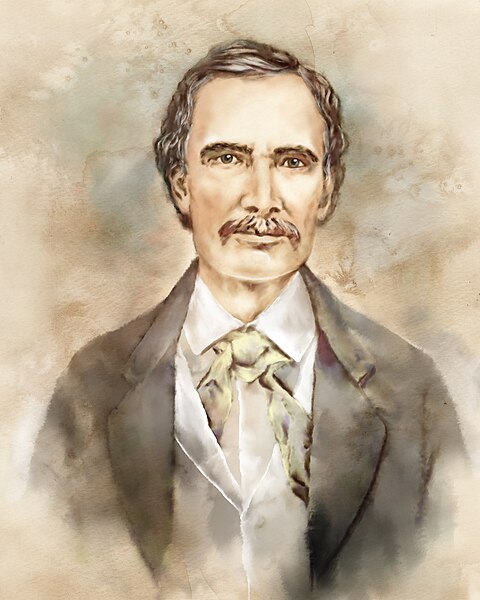Martin Parmer was an eccentric 19th-century American frontiersman, statesman, politician and soldier. On March 2, 1836, Martin Parmer seconded Sam Houston's motion to adopt the Texas Declaration of Independence from Mexico. Parmer signed the Texas Declaration of Independence and was Chairman of the Committee that drafted the Constitution of the Republic of Texas.
Watercolor portrait of Martin Parmer - "The Ringtail Panther"
Article from the December 29, 1825 edition of the National Gazette and Literary Register published in Philadelphia reporting that Missouri Senator Col. Palmer [Martin Parmer] "is said to have taken French leave and gone to Texas.".
Replica of the building where the Texas Declaration of Independence was signed at Washington-on-the-Brazos, Texas.
Letter by John Forbes in the Friday, April 8, 1836 edition of the Richmond Enquirer newspaper published at Richmond, Virginia.
Texas Declaration of Independence
The Texas Declaration of Independence was the formal declaration of independence of the Republic of Texas from Mexico in the Texas Revolution. It was adopted at the Convention of 1836 at Washington-on-the-Brazos on March 2, 1836, and was formally signed the next day after mistakes were noted in the text.
1836 facsimile of the Texas Declaration of Independence
Replica of the building at Washington-on-the-Brazos where the Texas Declaration was signed. An inscription reads: "Here a Nation was born."





